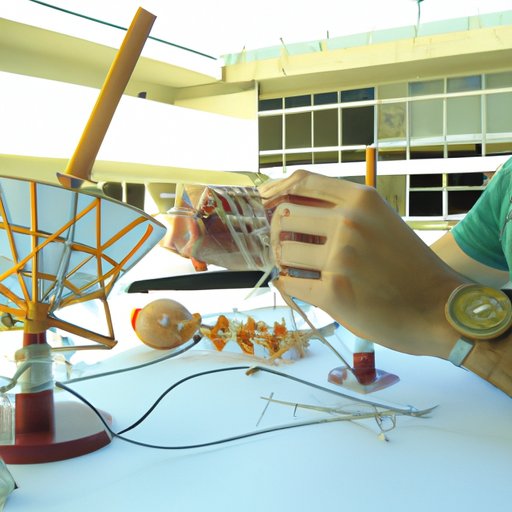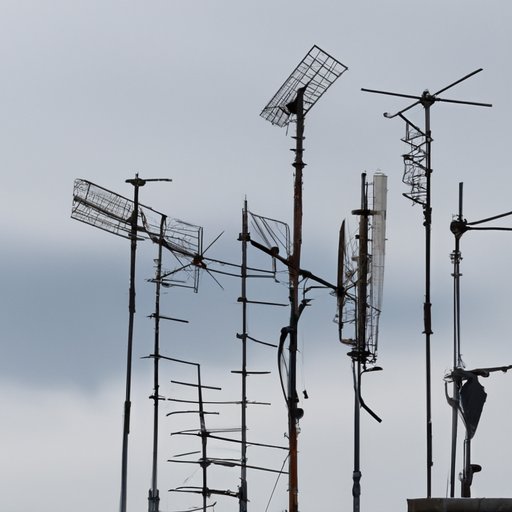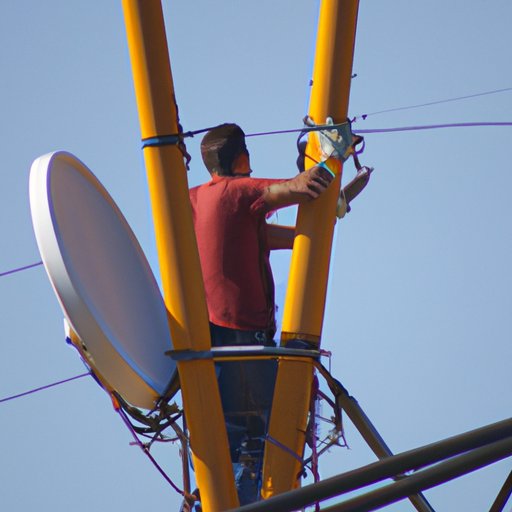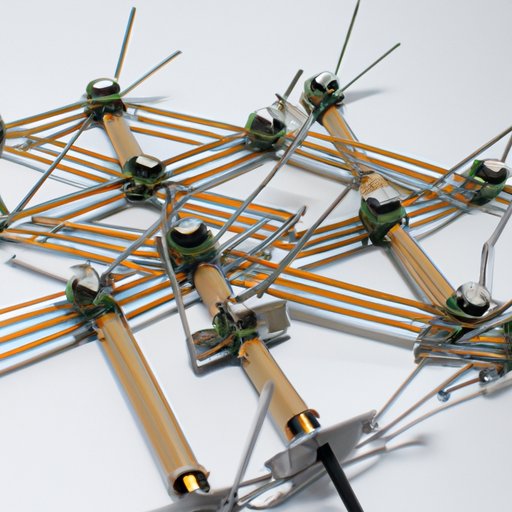Introduction
An antenna is an electronic device that transmits or receives electromagnetic (EM) waves in the form of radio signals. It is used to transmit and receive data from one point to another, such as a television signal or a cellular phone call. There are many different types of antennas, but all operate on the same basic principles.

Exploring the Basics of Antenna Technology
The first step in understanding how an antenna works is to understand the fundamentals of radio frequency (RF). RF is a type of electromagnetic energy that travels through the air, much like sound waves. It is measured in hertz (Hz), which is the number of times per second that a wave oscillates or cycles.
In order to transmit or receive information, an antenna must be tuned to a specific frequency bandwidth, which is the range of frequencies it can send or receive. The gain of an antenna is its ability to concentrate the radio waves in a certain direction. This is important when transmitting signals over long distances, as it ensures that the radio waves reach their intended destination.
Polarization is another important concept in antenna technology. It refers to the orientation of the electric field of the radio waves. Most antennas are either horizontally or vertically polarized, meaning that the electric field is either parallel or perpendicular to the ground.
The Physics Behind How an Antenna Works
The physics behind how an antenna works can be broken down into three main concepts: reflection, radiation, and wave propagation. Reflection occurs when a wave encounters an obstacle and bounces back in the opposite direction. This is what happens when you hear your voice echo off a wall.
Radiation occurs when a wave is emitted from a source, such as an antenna. The wave propagates outward in all directions until it reaches its destination. Wave propagation is the process by which the wave moves through space.
When a wave encounters an obstacle or other matter, it is absorbed, reflected, or diffracted. Absorption occurs when the wave is absorbed by the material. Reflection occurs when the wave bounces off the material and continues in the opposite direction. Diffraction occurs when the wave bends around the obstacle.
These three concepts are essential for understanding how an antenna works. By understanding how these concepts interact with each other, we can design antennas that are more efficient and effective at transmitting and receiving signals.
A Comprehensive Guide to Antenna Design and Function
When designing an antenna, there are several factors to consider. These include antenna impedance, directivity, and efficiency. Antenna impedance is the ratio between the voltage and current at the input of the antenna. This determines how much power the antenna can handle.
Antenna directivity is the ability of an antenna to concentrate its signal in a certain direction. A highly directional antenna will be able to focus its signal in one direction, while a less directional antenna will spread its signal in multiple directions. Antenna efficiency is the ratio between the power delivered to the antenna and the power radiated away from the antenna.

Different Types of Antennas and Their Uses
There are many different types of antennas, each serving a different purpose. Dipole antennas are the simplest and most common type of antenna. They consist of two conductive elements connected by a feedline, and are used for both transmitting and receiving signals.
Yagi antennas are more complex than dipole antennas, and are used primarily for transmitting signals over long distances. They consist of multiple elements arranged in a line, and have a higher gain than dipole antennas. Helical antennas are also used for transmitting long-distance signals, and consist of a cylindrical coil of wire.
Microstrip antennas are small and lightweight, and are used primarily for wireless communications. They consist of a planar conductor on a dielectric substrate, and are often used in mobile devices such as cell phones and laptops.

An Overview of Antenna Installation and Maintenance
Installing an antenna requires careful consideration of several factors. Site selection is important, as the location of the antenna will affect its performance. Mounting considerations are also important, as the antenna needs to be securely mounted in order to prevent damage. Connectors and cables must be properly installed in order for the antenna to work correctly.
Troubleshooting and repair are also important aspects of antenna maintenance. Common issues include poor reception, interference, and signal loss. If any of these issues occur, it is important to diagnose and repair them quickly in order to maintain optimal performance.
Conclusion
An antenna is an essential component of any communication system, and understanding how it works is key to optimizing its performance. From the basics of antenna technology, to the different types of antennas and their uses, to antenna installation and maintenance, this article has provided a comprehensive guide to understanding the fundamentals of antenna technology.
(Note: Is this article not meeting your expectations? Do you have knowledge or insights to share? Unlock new opportunities and expand your reach by joining our authors team. Click Registration to join us and share your expertise with our readers.)
